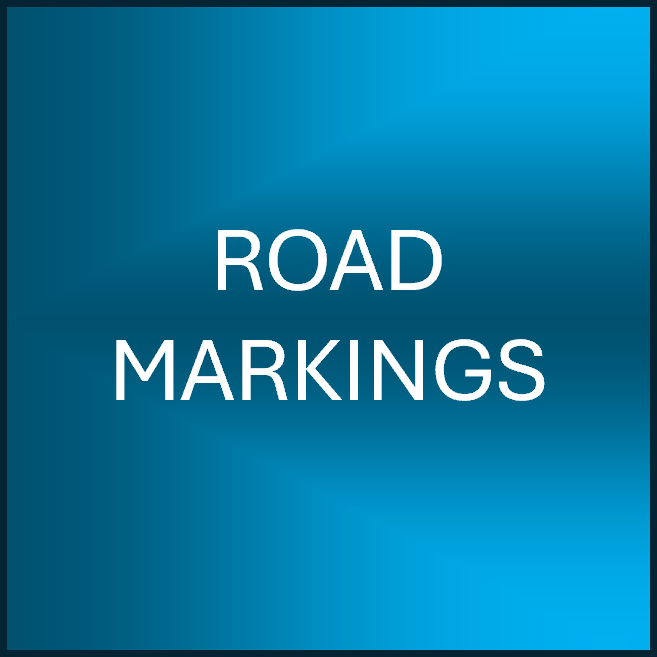
Road Markings and their meanings

Road Markings and their meanings
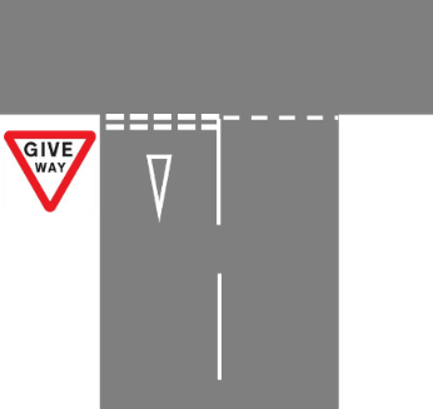
The “GIVE WAY” sign and road markings:
You must give way to traffic on the major road (the upright sign or both the sign and the triangle on the road might not be used at junctions where there is relatively little traffic.
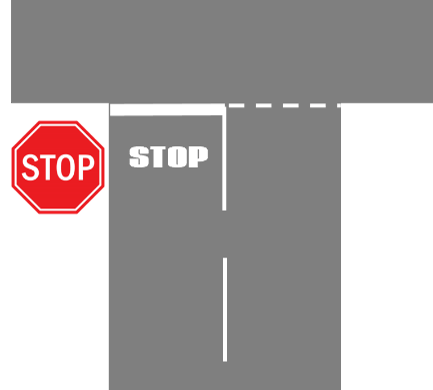
The “STOP” sign and road markings:
You must stop before crossing the transverse line on the road and ensure the way is clear before entering the major road.
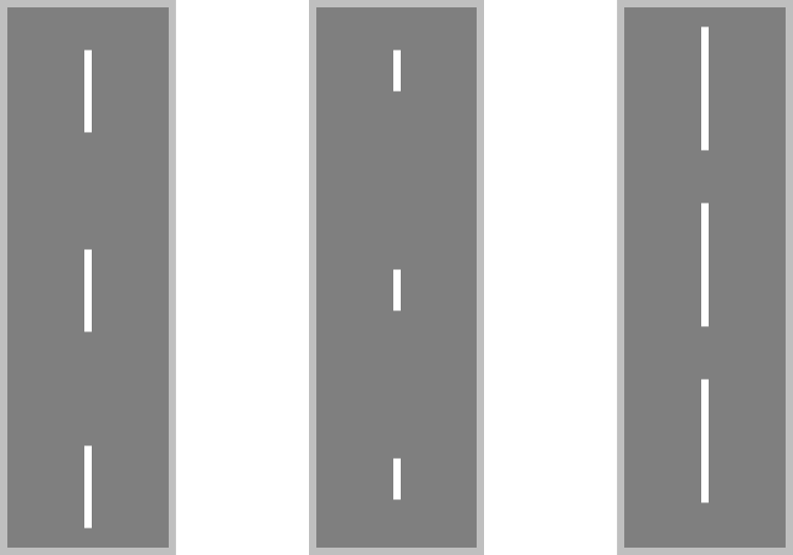
From left to right.
Centre line. On a single carriageway road.
Lane line. Separating traffic travelling in the same direction. (single or dual carriageway road)
Hazard warning line. (replaces a centre line)
An upright sign may indicate the nature of the hazard such as a bend. The marking is used also on the approach to a junction
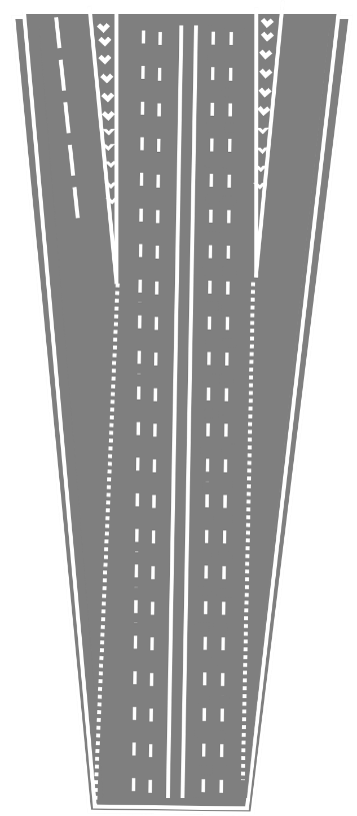
Motorway or dual carriageway road with exit and entry slip roads.
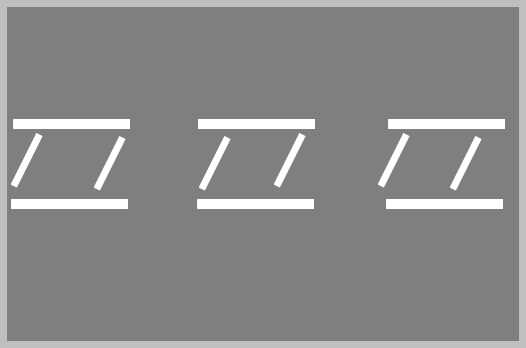
Diagonal white lines (hatched markings) bounded by broken lines may be used in the centre of the road to separate opposing flows of traffic. They are often provided at junctions to protect traffic turning right. They may also be used on the approach to a central traffic island or the start of a dual carriageway. Hatched markings with a single, broken boundary line may be used at the edge of the road or next to the central reservation of a dual carriageway: the diagonal lines always slope towards the direction of travel. You should not enter any hatched area bounded by a broken line unless it is safe to do so.
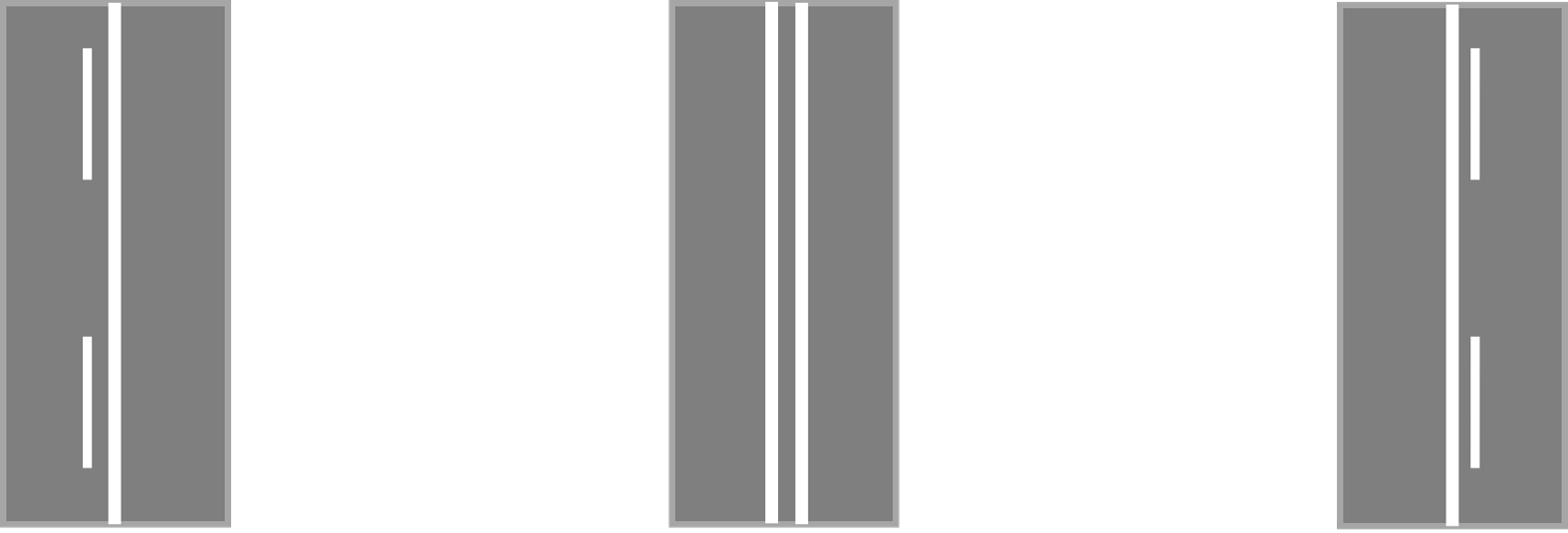
From left to right.
Left lane may overtake
No one may overtake
Right lane may overtake
Double white lines are used to prevent overtaking where visibility is restricted, and to separate opposing traffic flows on steep hills with climbing lanes.Double continuous lines are also sometimes used on other single carriageway roads that have two lanes in at least one direction. Viewed in the direction of travel, if the line closest to you is continuous, you MUST NOT cross or straddle it (except to turn into a side road or property, avoid a stationary vehicle blocking the lane, or overtake a pedal cycle, horse or road works vehicle moving at not more than 10mph)Where the line closest to you is broken, you may cross the lines to overtake if it is safe do to so. Stopping is prohibited on any length of road that has double white lines, even if the line on that side of the road is broken. The exceptions are stopping to pick up or set down passengers, or to unload or load. In these circumstances you should park off the main carriageway wherever possible.
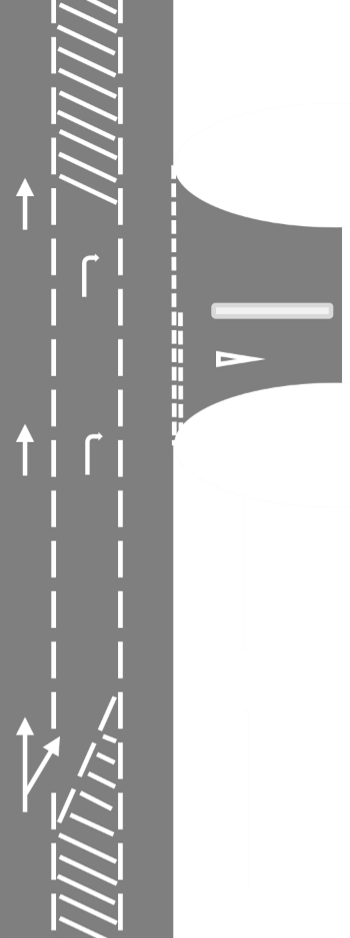
The hatched area is to protect turning traffic. Drivers should not enter unless it is safe to do so.
Ensure you are aware of all the different types and their meanings.
Not understanding all of them can put you or others in danger, risk penalty points being added to your licence, or fixed penalty fine being issued.